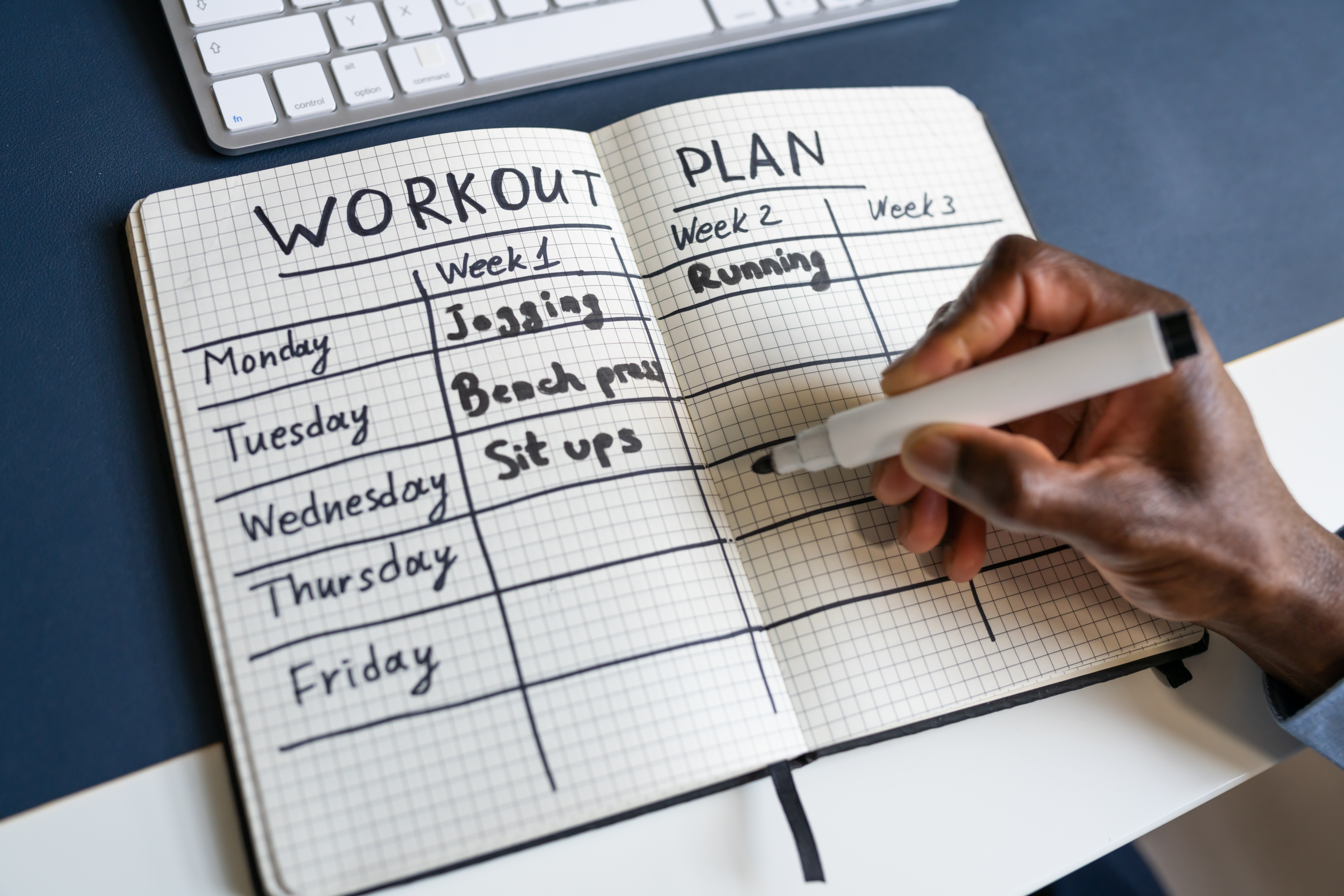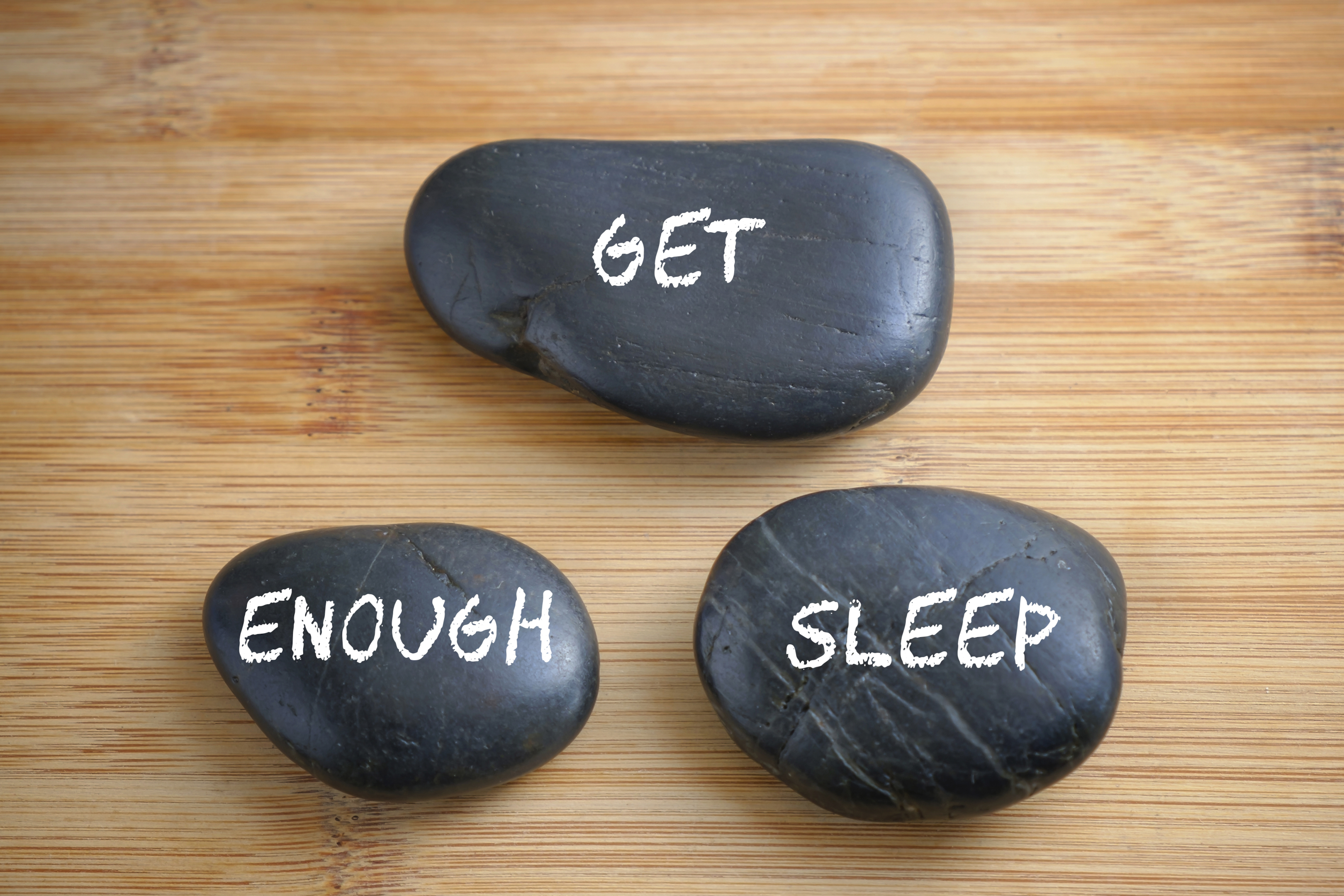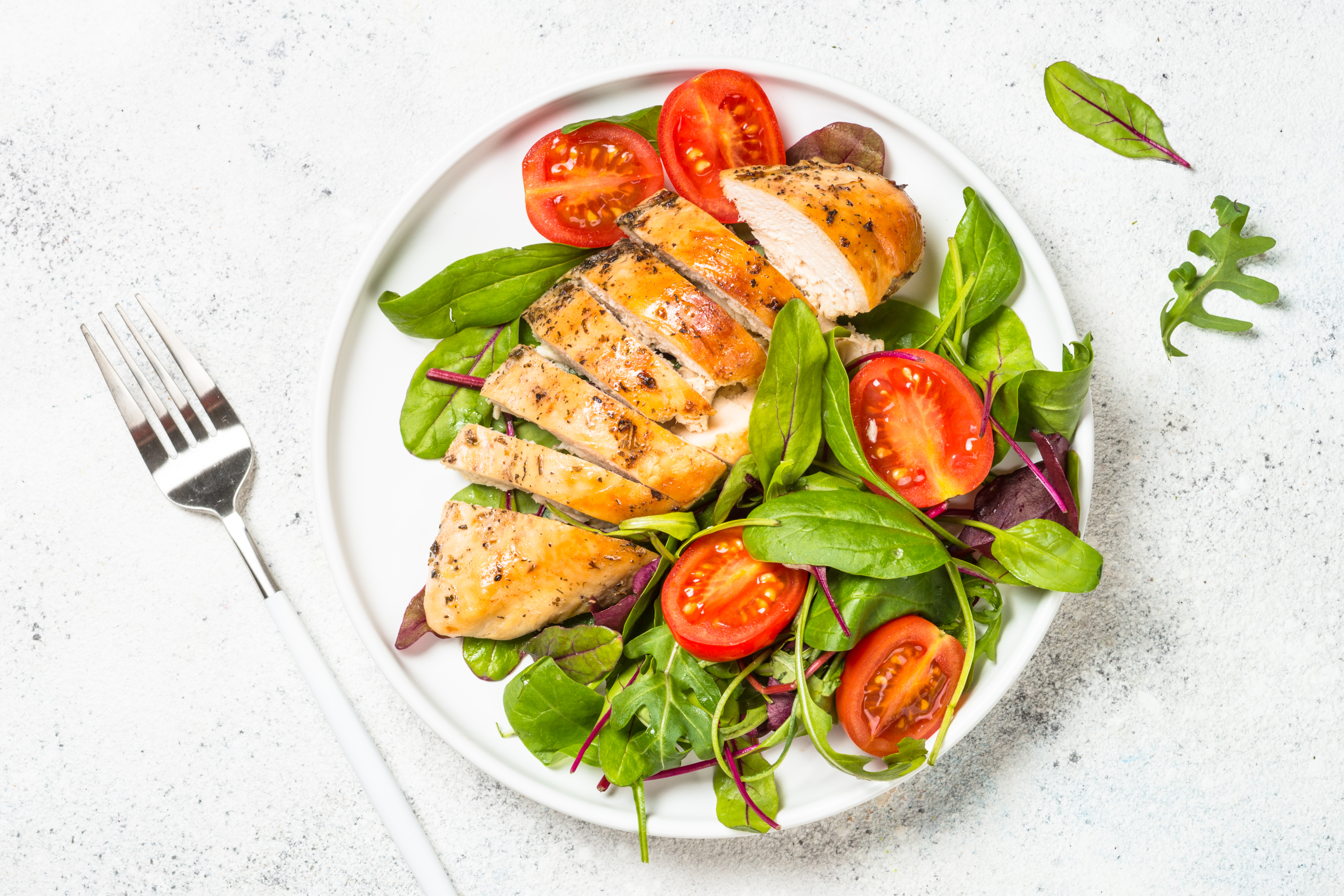In 30 seconds
With summer quickly approaching, people are focusing on slimming down and toning up.
So, here at Manual, we’ve created a simple-to-follow 2 month weight loss plan to help you lose weight, take control of your calorie intake, and bid any unwanted belly fat goodbye.
Within 2 months, you can lose up to 35 pounds. You’ll need to first set realistic but ambitious weight and fitness goals. Then, create both a meal plan and exercise plan, focusing on caloric intake and burning them.
Learn what foods to eat for weight loss as well as what foods to avoid, take care of your mental health and stress levels, and prioritise your sleep.
These steps will encourage you to create a tailored weight loss strategy that works for your lifestyle.
How much weight can I realistically lose in 2 months?
Before exploring our strategies to help you lose weight in 2 months, let’s first focus on exactly how much weight you can shift over the next 8 weeks.
Realistically, the amount of weight you lose will be down to you.
From your calorie intake to the duration of regular physical activity, and even fluctuations in motivation: there are many contributing factors that could act as a barrier or a springboard to help you lose weight fast.
You could lose up to 35 pounds in 2 months, (4 pounds per week,) but you’ll need to do so carefully. Switching on starvation mode is not a healthy dieting strategy. Instead, follow our 2 month weight loss plan.

How to lose weight in 2 months
Whether you want to tone up for a summer holiday, get in shape for a special occasion, or simply reap the health benefits of losing weight, it is absolutely possible to reduce your body weight in 2 months. Here’s how:
- Mentally prepare for your weight loss journeyBefore you start putting weight loss practices into place, you’ll need to mentally prepare. In order to lose a significant amount of weight in a tight turnaround time, you’ll need to make drastic lifestyle changes.Setting goals is one of the most important steps while you’re mentally preparing for your weight loss journey.Despite focusing on weight loss within the next 2 months, consider the long-term, too.What is motivating you to lose weight? Where do you want your weight and fitness levels to be in a year from now? What about 5 years from now?Answering these questions and working backwards will help you determine how much weight you’ll need to lose in both the short-term and long-term.Remember: losing weight is a marathon – not a sprint.While 2 months is enough time to start seeing weight loss results, you’ll need to keep up your healthy habits long after you’ve hit your 2 month goal.
- Keep a tracker or journalWhen working on a weight loss plan, you need to assess the impact of the changes you’ve put in place.Keeping a tracker or journal that documents your meals, physical activity, and sleeping habits will allow you to spot patterns and monitor your progress over time.Whether you choose to track this in a simple spreadsheet, an app, or good ol’ pen and paper is up to you. Just make sure you add to it regularly so you can assess whether your weight loss strategies are working.
3. Create an exercise and diet plan
If you’re hoping to burn calories, you need to consider the number of calories you’re consuming.
Food and exercise plans will become your blueprint for your bespoke weight loss programme.
Use Bupa’s Calories Calculator to work out how many calories you’ll be burning with certain exercises.

Start with your diet plan
For weight loss to happen within 2 months, you need to assess your current diet and be prepared to make some drastic changes.
Diets that contain processed foods (commonly found in [junk foods]) will need to be adjusted.
Your meal plan should contain whole grains and protein, with plenty of fresh vegetables.
Foods high in fibre are excellent for weight loss, because they make you feel full.
You should avoid refined carbs and sugar. Not only do these make losing weight incredibly difficult, but they are also a contributor to high blood pressure, mood swings, and heart disease.
Make sure, too, that you are eating regular meals. It can be tempting to give into crash dieting, but doing so is counterproductive.
Skipping a meal will often leave you hungry, making it more likely that you’ll snack on something full of fat and sugar later on.
On your diet plan, make sure you’re scheduling three meals per day at specific times. Eating at regular times will encourage your body to burn calories faster.
Remember, too, not to ban the foods you like most from your diet plan. So long as you’re eating a healthy amount and you’re including them as a rare treat, they can act as an incentive rather than a temptation.
Then build your exercise plan
It can be tempting to create a meal plan for weight loss and rely solely on your diet. However, to lose weight in 2 months, you need to be doing regular exercise, too.
Starting with your meal plan means you can calculate your caloric intake per meal which will tell you how many calories you need to burn with physical activity.
For you to lose weight and keep the weight off, you need to be in a calorie deficit. In short: you need to be eating and drinking fewer calories than you’re burning.
Generally, to calculate your calorie deficit, multiply your body weight by 15. This will tell you how many daily calories you need. To calculate your calorie deficit, you’d then subtract 500 calories from the number above.
Your exercise plan – when combined with your meal plan – should help you choose what type of exercise you do over the next 8 weeks. Certain forms of exercise are better for burning calories than others.
That said, losing weight fast is far easier when you actively enjoy the exercise you choose, so make sure you’re not picking a physical activity that you can’t stand!
The best types of exercise for weight loss are:
- Kickboxing
- Cycling
- Running
- Swimming
- Tennis
- Brisk walking
If you don’t want to spend hours at the gym, a brisk walk can burn as many calories as you would on the running machine!
Your exercise plan should accommodate regular but short and intense periods of exercise. This is known as high intensity interval training (or HIIT for short.)
Instead of staying in the staff room during your lunch break, take a brisk walk and leverage the time for calorie burning.
- Prioritise your sleep qualityAs you continue on your weight loss journey, the dramatic changes to your lifestyle through a change in diet and an increase in exercise will cause fatigue. It’s important that you remain rested.
It’s been proven that, if you’re able to sleep for at least 8.5 hours, you won’t be as hungry the next day and will experience fewer cravings.
Sleep deprivation causes the opposite, increasing your hunger levels and the chances of you giving into unhealthy cravings.
With that in mind, make sure you’re getting enough sleep. You’ll want to avoid caffeine, particularly after midday, as well as too much screen time before bed.
Give yourself a “winding down” period before falling asleep. This could include reading or listening to music.
Not only is sleep fundamental for your weight loss journey, but it’s also a crucial element for your overall health. So, make sure you’re prioritising your forty winks and setting healthy bedtime habits and routines.

- Regulate stress and mental healthWeight loss can be impacted by many external factors. Stress can have a direct impact on how much weight we lose and can, in fact, cause weight gain.Think about the last time you felt significantly stressed. It’s likely that you craved “comfort food”.Comfort food, for a lot of us, include foods that are high in sugar, fat, and refined carbohydrates.Giving into these cravings based on high stress levels can cause a reliance on emotional eating, which is a very difficult pattern to break.The good news is that exercise often helps with stress regulation. The endorphines released after intense exercise make us feel good, and allow a diversion exit for frustration and anger.It’s also worth considering meditation or breathing techniques to help manage stress.
Lose weight in 2 months: what to eat
Yo-yo dieting is not a productive or healthy way to lose weight. You shouldn’t be cutting calories left, right, and centre.
So, what should you eat for weight loss? Here’s a few do’s and don’ts for your fridge and cupboard.
Do eat: leafy greens
Leafy greens are a fantastic addition to any healthy meal. Vegetables like kale, Swiss chard, and spinach are sky-high in fibre and nutrients.
Leafy greens also host thylakoids, which studies have proven, boost satiety and improved appetite management.
Filling you up quicker and having fewer cravings for additional food will help you stay on track with your calorie intake.
Do not eat: chips
Chips are a fast way to weight gain, and while it’s okay to eat chips occasionally, if they’re a regular feature to your meal plans, you’ll find it hard to lose weight.
Chips are packed full of salt and unhealthy fat and have a huge number of calories. They also have very little protein and fibre, so – despite eating the whole bowl – you’ll still feel hungry, causing you to snack and consume even more calories.
Do eat: lean meats (chicken breast, tenderloin, etc)
Including meat in your diet is something of a controversial topic.
If you’re vegan or vegetarian, you don’t have to eat meat in order to lose weight. However, if you’re a meat-eater, opting for lean meats will help you lose weight.
Of all the meats available, skinless chicken breast and lean red meat contains far less saturated fat. So, opt for lean protein when pairing meat with your meal.

Do not drink: fizzy pop
It sounds obvious, but many people who are on their weight loss journey will regularly still drink diet versions of their favourite fizzy drinks. This is due to focusing on what you’re eating, but not necessarily what you’re drinking.
Fizzy drinks – as well as energy drinks, juice, and sports drinks – are packed with added sugars and are extremely low in terms of nutrients.
Drinks like these dramatically increase your caloric intake without making you feel full.
As you’re trying to lose weight, you’ll be exercising regularly. So, it’s important to stay hydrated.
Opt for water if you can. You can always add a slice of lemon or cucumber to your water if you’re searching for some flavour.
Do eat: beans and legumes
Beans and legumes are key players for weight loss. They’re a great way of getting more protein and fibre into your body, which help you feel full quicker.
Stock up on lentils, kidney beans, chickpeas, and black beans when creating your meal plans.
Do not eat: white bread and pasta
Pasta is an easy go-to for a quick meal after a busy day, just as toast is a staple breakfast.
However, if you’re eating white bread and pasta, you’re not getting the essential nutrients you need.
You don’t need to quit bread and pasta, though. Simply swap out white pasta and bread for their whole-grain alternatives.
You’ll also find that whole-grain pasta and bread is far more filling, too.
You should reduce the number of sweets, crisps, and chocolate bars you’re eating if you’re hoping to lose weight in 2 months.
On top of this, try to consume fewer carbs, striking a healthy balance between the food groups. Fat consumption isn’t always bad for you. Instead, you’ll need to opt for healthy fats.
Remember, if you’re struggling to know what foods to eat, you should speak with a registered dietitian.
Not only can a registered dietitian help you lose weight, but they can encourage a balanced, healthy diet, which brings with it a range of other health benefits.
Lose weight in 2 months: working with a personal trainer
People who are experiencing weight gain despite eating well may feel frustrated and confused.
Often, there’s a greater emphasis placed on dietary intake than exercise. However, to lose weight in 2 months, both need to be working in tandem.
Working with a personal trainer will help you with both nutrition and exercise.
A fitness instructor will take your weight goals into account, tailoring a programme just for you. Whether you’re looking to shed a few pounds or you’re planning a more dramatic weight loss result, working with a professional also means you have someone else to hold you accountable.
Tailored sessions also make use of a professional’s experience; showing you how to burn your body fat and, instead, build muscle. Plus, once your goal is achieved, you may continue working together, allowing you to lose even more weight.
Weight loss starts with you
Everyone’s experience of weight loss is different. Their barriers and motivations are unique, and – as such – a weight loss plan isn’t one-size-fits-all. That said, these steps will help you lose weight in 2 months.
Make sure you plan accordingly, track your results, and reward yourself for your progress.
References
HIIT training reduces more body fat compared to traditional exercise – National Library of Medicine
Sleep Restriction Enhances The Daily Rhythm of Circulating Levels of Endocannabinoid 2-Arachidonoylglycerol – National Library of Medicine
Effects of Thylakoid Intake on Appetite and Weight Loss: A Systematic Review – National Library of Medicine






